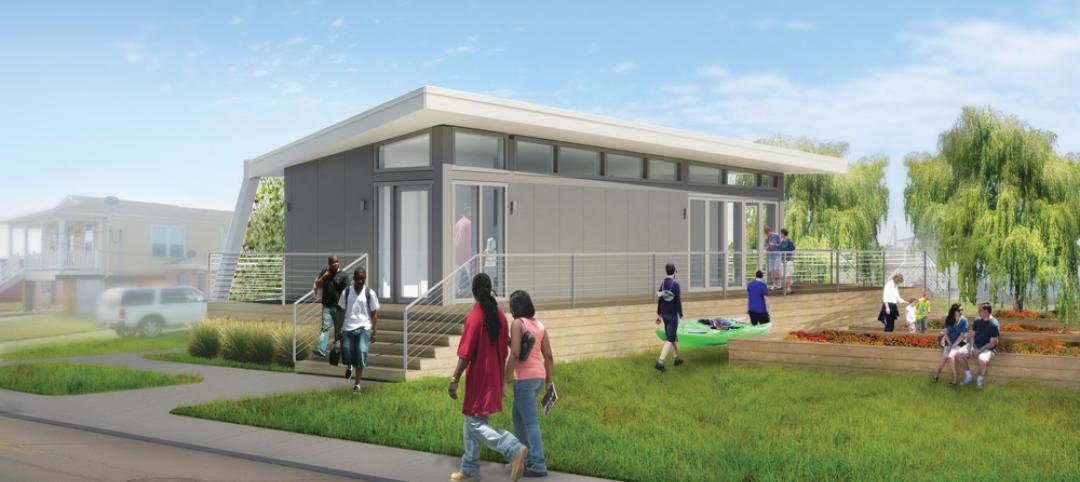On July 20, the University of Michigan in Ann Arbor opened Mcity, a 32-acre simulated urban and suburban controlled environment, designed specifically to test the potential of connected and automated vehicle technologies.
The $6.5 million project comprises a five-mile stretch of roads, some of them up to five lanes. Mcity includes rearrangeable architecture such as buildings, streetlights, parked cars, traffic lights and stop signs, sidewalks, and other obstacles. Robotic pedestrians and mechanized bikes roam throughout Mcity.
The miniature city is developed and designed by the university’s two-year-old Interdisciplinary Mobility Transformation Center, a partnership of several automotive companies, the Michigan Department of Transportation, researchers from UM’s Transportation Research Institute, and its College of Engineering.
“The initiative demonstrates the great potential in working with partners outside the University to address compelling issues of broad impact,” said UM’s president Mark Schlissel. NPR reports that 15 companies, which include Ford, GM, and Nissan, paid $1 million each to help build Mcity.
Companies like Google, Toyota, Uber, and Apple have been working on self-driving technologies that rely on GPS, radar and remote sensors known as LIDAR. So far the test results have been impressive, albeit in a limited sense. Experts anticipate that driverless streets and highways could be a common reality within the next 10 to 15 years. The real challenge, though, is getting driverless cars to react to and interact with how humans drive.
Google, which began its self-driving project in 2009, currently averages 10,000 autonomous miles per week on public streets. Over six years of testing through May 2015, its driverless vehicles had been involved in 12 minor accidents during more than 1.8 million miles of autonomous and manual driving combined. “Not once was the self-driving car the cause of the accident,” claims Google in a recent progress report. However, Google’s test cars rarely go beyond 25 miles per hour and so far have been limited to roads the car’s computers have already analyzed.
As the New York Times reported earlier this month, autonomous vehicles right now are programmed to drive overly cautiously, compared with humans’ typically aggressive driving habits. Autonomous cars “have to learn to be aggressive in the right amount, and the right amount depends on the culture,” Donald Norman, director of the Design Lab and the University of California, San Diego was quoted as saying.
Mcity, then, provides a testing ground for driverless cars in unpredictable conditions.
“There are many challenges ahead as automated vehicles are increasingly deployed on real roadways,” explains Peter Sweatman, director of the U-M Mobility Transformation Center. “Mcity is a safe, controlled and realistic environment where we are going to figure out how the incredible potential of connected and automated vehicles can be realized quickly, efficiently and safely.”
NPR quotes university researchers who are hoping to have 20 to 30 automated cars driving around Ann Arbor’s streets within the next six years.
Related Stories
| Nov 18, 2014
New tool helps developers, contractors identify geographic risk for construction
The new interactive tool from Aon Risk Solutions provides real-time updates pertaining to the risk climate of municipalities across the U.S.
| Nov 14, 2014
What college students want in their living spaces
In a recent workshop with 62 college students, architects from Little explored the changing habits and preferences of today's students, and how those changes affect their living spaces.
| Nov 12, 2014
Chesapeake Bay Foundation completes uber-green Brock Environmental Center, targets Living Building certification
More than a decade after opening its groundbreaking Philip Merrill Environmental Center, the group is back at it with a structure designed to be net-zero water, net-zero energy, and net-zero waste.
| Nov 7, 2014
NORD Architects releases renderings for Marine Education Center in Sweden
The education center will be set in a landscape that includes small ponds and plantings intended to mimic an assortment of marine ecologies and create “an engaging learning landscape” for visitors to experience nature hands-on.
| Nov 6, 2014
Studio Gang Architects will convert power plant into college recreation center
The century-old power plant will be converted into a recreation facility with a coffee shop, lounges, club rooms, a conference center, lecture hall, and theater, according to designboom.
| Oct 29, 2014
Newtown, Conn., breaks ground on new Sandy Hook Elementary School
Construction on the 87,000-square-foot building will begin in March 2015, and is set to open for the fall 2016 school year. The property is fenced off so that the site cannot be seen or photographed from the outside.
| Oct 26, 2014
Study asks: Do green schools improve student performance?
A study by DLR Group and Colorado State University attempts to quantify the student performance benefits of green schools.
| Oct 21, 2014
Check out BD+C's GreenZone Environment Education Classroom debuting this week at Greenbuild
At the conclusion of the show, the modular classroom structure will be moved to a permanent location in New Orleans' Lower 9th Ward, where it will serve as a community center and K-12 classroom.
| Oct 20, 2014
Institute for young innovators breaks ground at the University of Utah
The five-story, 148,000-sf building is designed to function like a student union for entrepreneurs and innovators, with a 20,000-sf “garage” that will be open for any student to attend events, build prototypes, and launch companies.
















